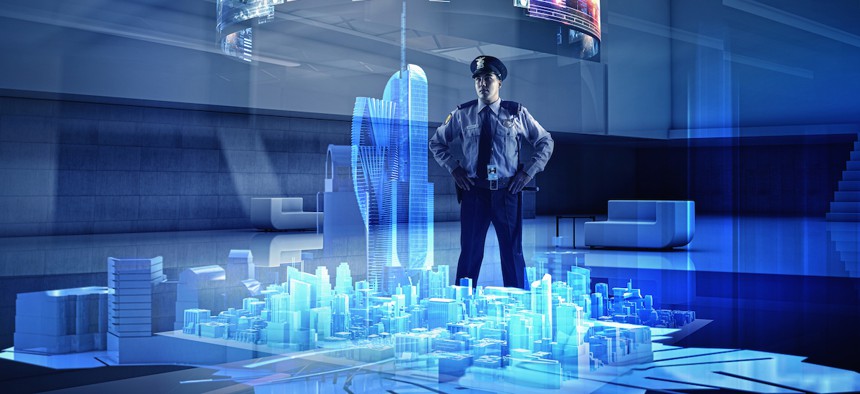How digital twins can enrich emergency response

Colin Anderson Productions pty ltd/Getty Images
With their advanced simulation and predictive analytics capabilities, digital twins can give responders a common operating picture with real-time, integrated information.
Emergency responders can use digital twin technology to overcome communication gaps, an expert in the technology says.
Digital twins can provide “advanced simulations, predictive analytics and also incident scenarios for [the] decision process,” said David Shaw, founder and chief executive officer of Intuitus, during an April 12 webinar hosted by the Digital Twin Consortium.
The main benefit of using the technology in emergency response is that it creates a common operating picture, which first responders currently lack, Shaw said. Public safety departments have different communication systems and protocols, and they need a solution that integrates data about an incident, unifies access to that information and allows response teams to interact in real time across the entire area that the emergency situation affects.
“You have many people going out there doing first response with different communication systems,” Shaw said. “Not everybody is coordinated.”
What’s more, a digital twin uses predictive analytics to enable responders to put together scenarios on the fly so that they can see how tweaking response tactics affects outcomes for victims, the responders themselves, and hospitals and recovery efforts.
“You want to have the correct data to make the right decisions,” Shaw said. “We’re looking at this whole thing through a single pane of glass.”
Shaw broke the digital twin use case into several layers. At the foundation are streams of input into the aggregated information layer, which feeds predictive analytics. Those insights can be “coordinated out through AI or ChatGPT today,” he said.
Another element is cybersecurity. Digital twins can serve as quantitative tools and decision aids at the tactical level of cybersecurity, Shaw said, by organizing systems and identifying vulnerabilities. As with emergency situations, they allow for the testing of how changes might affect outcomes without impacting actual assets and operations.
“Digital twin allows the creation of a virtual duplicate of a live production system, network environment or cloud instance in real time,” he said.
Use of digital twins is not limited to emergency response and cybersecurity, however. Last year, Aurora, Illinois, issued a request for proposals to create a digital twin of the city to assist in recordkeeping and public safety, and Las Vegas officials shared that a digital twin had been made of a small section of the city’s downtown area to aid sustainability efforts.
Orlando, Florida, has a digital twin that allows users to layer on datasets to “highlight infrastructure and development, view traffic patterns, map the flow of new taken into [the] workforce and determine the impact of [the] region’s growth,” according to the Orlando Economic Partnership.
“This is the new ‘new,’ you might say,” Shaw said of digital twins.
Stephanie Kanowitz is a freelance writer based in northern Virginia.





